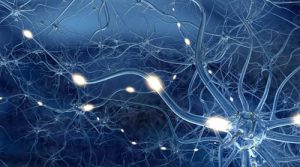Everyone has forgotten memories. We can’t remember the time grandpa ‘helped’ us play baseball and struck you out, or the time you lost your favorite rabbit’s foot, and never found it again.
An estimated 5.4 million Americans of all ages have Alzheimer’s disease in 2016. Of the 5.4 million Americans with Alzheimer’s, an estimated 5.2 million people are age 65 and older, and approximately 200,000 individuals are under age 65 (younger-onset Alzheimer’s).
With Alzheimer’s, those memories, short term and long term, seem to be locked in the brain for good, with only some short bursts of showing themselves.
Though recently, an experimental optogenetics technique has been applied to a mouse model of Alzheimer’s disease (AD) to rescue those memories, and bring them back to the surface. The study revealed that spines — small knobs on brain-cell dendrites through which synaptic connections are formed — are essential for memory retrieval and that fiber optic light stimulation could be used to regrow lost spines, enabling the mice to remember a previous experience.
Optogenetics is a biological technique which involves the use of light to control cells in living tissue, typically neurons, that have been genetically modified to express light-sensitive ion channels. The use of such equipment would also indicate that the lens be designed and manufactured to precision accuracy to stimulate the cells accordingly. At UKA, we not only design, but we also manufacture the lens. Therefore, you have a team of experts on hand from beginning to end.
Researchers from the Massachusetts Institute of Technology’s Riken Center for Neural Circuit Genetics reported that through repeated stimulation with high-frequency bursts of light to the hippocampal memory circuit in AD mice, they boosted the number of spines to levels indistinguishable from those in control mice. The freezing behavior in the trained task also returned and remained for up to six days.
“We have shown for the first time that increasing synaptic connectivity within engram cell circuits can be used to treat memory loss in mouse models of early Alzheimer’s disease,” said MIT Ph.D. candidate Dheeraj Roy.
Being able to stimulate the brain in such a fashion is being used in conjunction with other metabolic enhancement for neurodegeneration (MEND), the treatment involves a 36-point program that includes medication, dietary changes, vitamin supplements, brain stimulation and exercise, among several other things.
Ten patients suffering from various degrees of age-related cognitive decline have seemingly had their lives transformed after receiving a new form of highly personalized treatment. Describing their research in the journal Aging, the study authors claim that, thanks to their new approach, “patients who had had to discontinue work [due to their condition] were able to return to work, and those struggling at work were able to improve their performance.”
Being able to recall those lost memories, and reverse to some extent the effects of Alzheimer’s has the potential to give people their lives back.
Universe Kogaku designs and manufactures optical lenses for optogenics equipment, security, high tech and electronic applications. We stock 1000’s of standard lens assemblies and can custom design a solution for scanners, CCTV, CCD/CMOS, medical imaging, surveillance systems, machine vision and night vision systems.